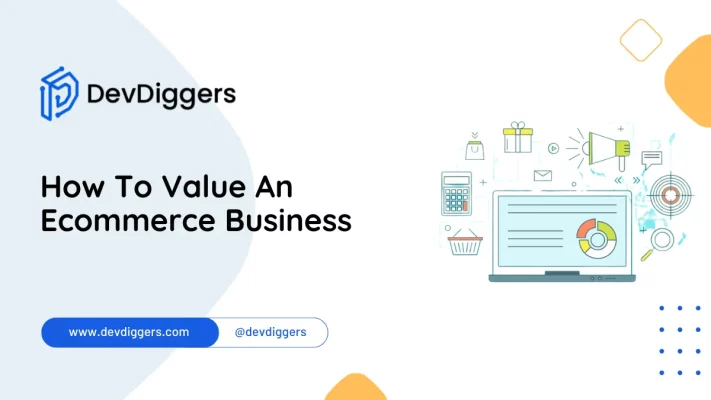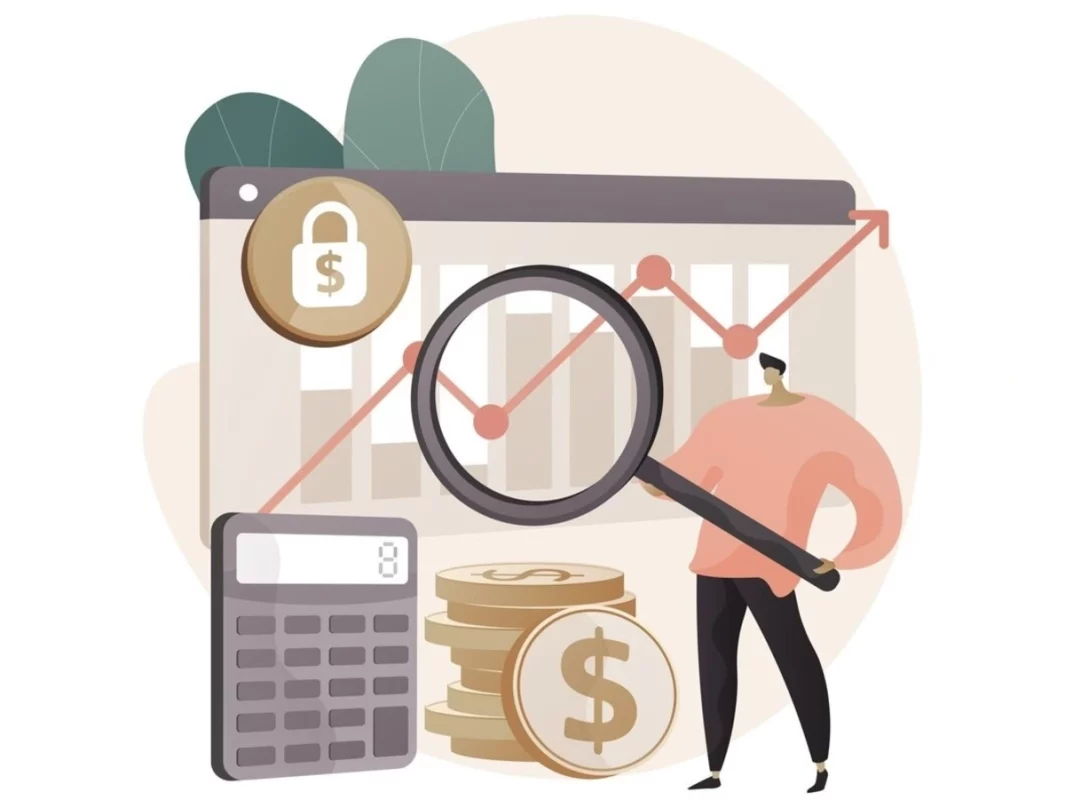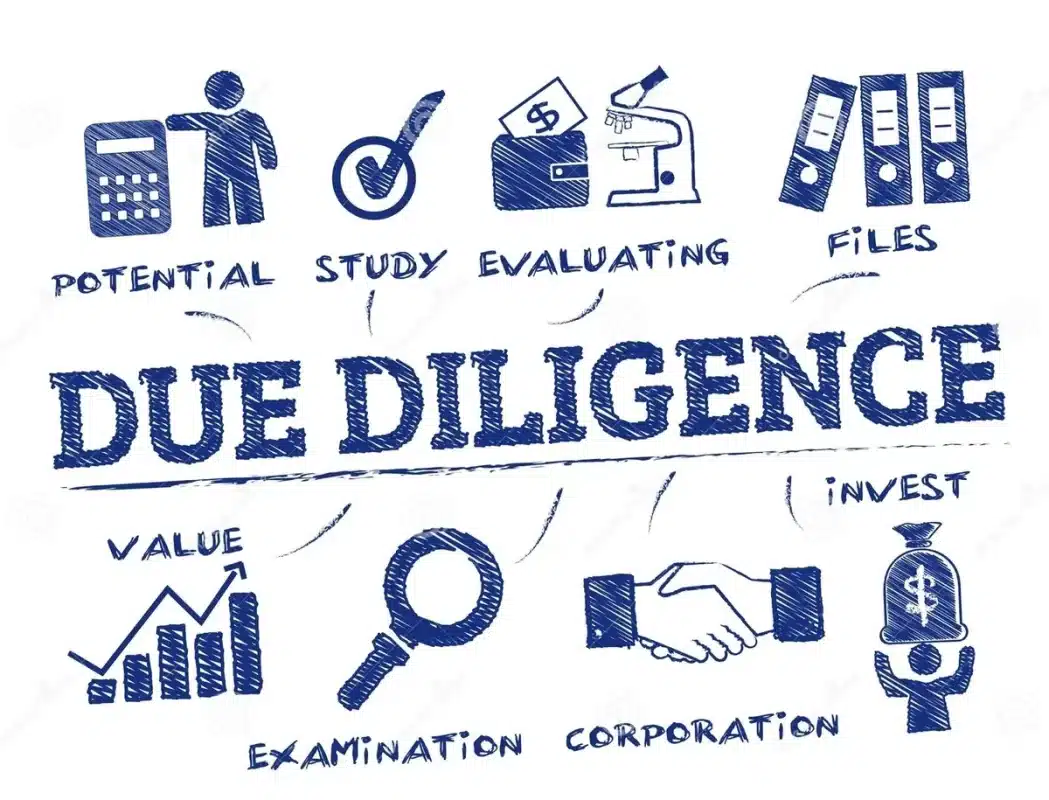How To Value An Ecommerce Business

Understanding how to value an eCommerce business is essential whether you’re looking to purchase, sell, or invest.
With the rapid expansion of Internet commerce, understanding the measures and procedures used to calculate fair market value has become critical.
Revenue sources, customer base, brand strength, and market trends are all important factors to consider when determining valuation.
In this blog, we’ll examine how to value an eCommerce business, including numerous methodologies and crucial aspects to help you confidently navigate this challenging yet rewarding process.
Whether you’re an entrepreneur trying to sell your online store or an investor looking for chances in the digital marketplace, knowing how to value an eCommerce business can mean the difference between a successful transaction and a missed opportunity.
Table of Contents
What Is Ecommerce Business Valuation?
Ecommerce business valuation is the process of calculating the economic value of an online business.
This valuation is important for various reasons, including selling the business, raising financing, combining with another company, and evaluating the company’s financial health.
The valuation process considers several criteria and applies various approaches for an appropriate assessment.
The following are the important components and approaches utilized in eCommerce business valuation
Why To Value An Ecommerce Business?
Understanding how to value an eCommerce business is crucial for stakeholders, investors, and owners due to several key reasons:
- Strategic Decision Making: Valuation provides an in-depth overview of the eCommerce business’s financial health and value. This information is critical for making sound strategic decisions about expansion, investment, collaborations, and prospective sales.
- Investment and Financing: Investors and lenders need a valuation to estimate the risk and potential return on investment (ROI) before committing capital to an eCommerce business. A valid valuation helps in raising money for expansion or operating purposes.
- Transaction Purposes: Valuation is required when purchasing or selling an online business. Sellers aim to maximize profits, whereas buyers want to grasp the fair market worth and negotiate accordingly.
- Benchmarking and Performance Evaluation: Comparing the company’s valuation over time or against competitors reveals information about its performance, market position, and growth prospects.
- Shareholder and Partnership Agreements: Valuation guarantees that shareholders and partners are treated equally by evaluating the worth of their ownership stakes. It helps in decision-making in stock transactions, buyouts, and mergers.
- Legal and tax compliance: Valuation may be necessary for tax reporting purposes, such as calculating capital gains taxes or assessing the value of intangible assets for tax deductions. It also helps compliance with accounting rules and laws.
- Risk Management: Understanding the value of an eCommerce business assists in efficiently assessing and managing risks. It indicates areas of vulnerability and offers suggestions for potential mitigations.
- Employee Incentives: Valuation helps determine equity compensation or stock options for employees, aligning their interests with the company’s overall growth and profitability.
- Strategic Partnerships and Alliances: Valuation can help with strategic partnership, collaboration, and alliance negotiations by providing a clear image of the eCommerce business’s value and potential synergies.
- Exit Planning: Knowing the value of a business is critical for owners who plan to quit it, whether through sale, succession, or retirement. This information is used to calculate retirement income, negotiate terms with possible buyers, and plan estate transfers.
In summary, knowing how to value an eCommerce business is essential for informed decision-making, attracting capital, complying with regulations, managing risks, and planning for future growth or exit strategies.
It provides stakeholders clarity and confidence and helps maximize the business’s potential value.
How To Value An Ecommerce Business
Understanding how to value an eCommerce business involves a comprehensive assessment of several key factors to determine its worth. Below are essential steps and considerations to guide this process:
1. Revenue and Profit Analysis

The first step in determining how to value an eCommerce business is to review its income and profitability thoroughly.
Start by determining your primary eCommerce revenue streams, such as product sales and subscriptions.
Evaluate profit margins and operational efficiency to evaluate financial health and development prospects.
Look for continuous revenue growth, evaluate the scalability of the business model, and account for any unusual items that affect profitability.
This thorough examination lays the foundation for appropriately evaluating the online business.
2. Customer Base and Market Position

Understanding the customer base and evaluating the market position are essential steps in valuing an eCommerce business.
Analyzing customer demographics, purchasing behavior, and lifetime value can help you understand acquisition costs, retention rates, and overall market appeal.
Evaluating the company’s competitive advantages, unique selling factors, and entry barriers helps determine its market position.
A strong market presence increases perceived value and development potential, which are critical criteria for appropriately evaluating an online business.
This version summarizes the value of examining the customer base and market position in valuing an eCommerce business.
3. Assets and Inventory

When valuing an eCommerce business, it is critical to examine its assets thoroughly. Begin by assessing your tangible assets, including current inventory levels, equipment, and physical storage facilities.
Inventory management is critical in eCommerce, influencing operational efficiency and financial health.
When calculating the current value of stocks, consider its turnover rate, outdated stock, and expected reductions.
Consider the value of intellectual property associated with items or the brand, such as trademarks, copyrights, and patents.
These invisible assets add considerably to the overall valuation by indicating brand strength and market placement.
Furthermore, digital assets such as the eCommerce platform, domain name, and customer database should be evaluated.
These assets assist operations and improve the company’s online profile and consumer involvement, impacting its perceived worth.
4. Ecommerce Platform and Technology

Evaluating the eCommerce platform and technologies is necessary when determining how to value an eCommerce business.
This includes assessing the platform’s scalability, functionality, and ability to estimate future growth.
Assessing the user experience (UX) and interface design is critical since they directly impact consumer engagement and conversion rates.
In addition, investigate the backend infrastructure, which includes hosting arrangements, security measures, and data management systems.
Understanding these technical factors improves operating efficiency and highlights potential hazards such as technology outdates or vulnerabilities.
Evaluating ongoing technological investments in platform maintenance or upgrades is also critical, as these investments affect future operational costs and capabilities.
A strong eCommerce platform that supports growth and improves consumer experience can greatly contribute to the business
5. Market Conditions and Industry Trends

When understanding how to value an eCommerce business, it is necessary to consider market conditions and industry trends.
This involves tracking economic variables like GDP growth, consumer spending habits, and interest rates, all impacting online purchase behavior.
Understanding eCommerce growth estimates, mobile commerce trends, and technical breakthroughs like AI and blockchain is also critical.
Changes in the regulatory environment, competitive landscape, and developing market prospects all impact firm valuation.
By assessing these criteria, stakeholders can make more informed decisions about an eCommerce business’s value and growth potential.
6. Financial Metrics

Valuing an eCommerce business involves analyzing key financial factors important to its performance and growth. Gross Merchandise Value (GMV) evaluates overall sales volume and focuses on transaction scale.
Customer Lifetime Value (CLV) predicts total revenue from each client, reflecting loyalty and retention performance.
Average Order Value (AOV) represents the average amount spent on each transaction, directly impacting income through pricing and marketing methods.
Conversion rate is the success of converting visitors into consumers. Profitability measures, such as gross and net profit margins, evaluate financial health and efficiency.
Marketing efficiency is evaluated using the Cost of Customer Acquisition (CAC) versus CLV metric.
Return on Investment (ROI) analyzes the profitability of investments and guides strategic decisions.
These metrics provide a comprehensive financial performance perspective and help eCommerce businesses with accurate evaluation and strategic planning.
7. Valuation Methods

The next step in how to value an eCommerce business is to use a variety of approaches to evaluate its worth. There are several valuation methods that you can go with to help value your eCommerce business.
- Discounted Cash Flow (DCF): The Discounted Cash Flow (DCF) method anticipates future cash flows and discounts them to present value, which is appropriate for organizations with predictable revenue streams.
- Market Comparables: This method compares the business to similar ones based on revenue multiples and customer data.
- Asset-Based Approach: The Asset-Based Approach evaluates website value.
- Income Approach: The Income Approach evaluates income possibilities using indicators such as gross merchandise value (GMV) and profit margins.
- Risk Assessment Adjustments: This method considers industry-specific hazards.
- Hybrid Approaches: Hybrid Approaches combine methodologies to provide an integrated evaluation.
Choosing the suitable method is determined by the stage of the business and market dynamics, resulting in a complete assessment guided by experienced professionals.
8. Due Diligence

Conducting thorough due diligence is an essential step in how to value an eCommerce business.
This essential phase thoroughly examines numerous variables to acquire explicit knowledge before calculating the market value.
Financial due diligence includes reviewing financial accounts for correctness, assessing income sources and expenses, and detecting any liabilities or abnormalities affecting valuation.
Operational due diligence evaluates the efficiency of operational procedures, including order fulfillment and customer service.
Legal and compliance due diligence guarantees regulatory compliance while also reviewing contractual commitments.
Customer and market due diligence examines customer demographics, market positioning, and competitor analysis.
Technological due diligence assesses the eCommerce platform’s scalability and stability.
Strategic due diligence examines current actions and their strategic alignment with market opportunities.
By meticulously examining these areas, stakeholders can uncover critical insights contributing to a well-founded eCommerce business valuation.
Conclusion
In conclusion, understanding how to value an eCommerce business requires a thorough assessment of financial performance, operational efficiency, market dynamics, and development potential.
Stakeholders can obtain a thorough valuation by combining quantitative factors like revenue streams and profitability with qualitative elements like brand equity, consumer involvement, and industry trends.
Furthermore, accurate due diligence in the legal, technological, and strategic dimensions ensures a precise evaluation of the business’s value.
This method helps businesses make educated decisions and places them strategically in the competitive eCommerce landscape.
Finally, by taking a practical and systematic approach customized to the complexities of eCommerce, stakeholders may accurately assess the business’s underlying value in today’s changing industry.
FAQs
How is revenue typically evaluated in eCommerce business valuation?
Revenue evaluation in eCommerce businesses often involves analyzing revenue streams’ consistency, growth rate, and quality. Factors such as recurring revenue, customer acquisition cost (CAC) to lifetime value (LTV) ratio and revenue diversification are crucial in determining the valuation.
What should eCommerce business owners do to increase their company’s valuation?
To enhance valuation, eCommerce business owners should focus on improving profitability, expanding customer acquisition channels, optimizing operational efficiency, nurturing customer relationships, investing in scalable technology, and staying abreast of industry developments.
When is the right time to conduct a valuation of an eCommerce business?
Valuation should be conducted regularly before significant business events such as fundraising, mergers, acquisitions, or exit strategies. It helps stakeholders understand the business’s current worth, identify growth opportunities, and make informed strategic decisions.
How do industry trends affect the valuation of an eCommerce business?
Current and projected industry trends, including market growth rates, technological advancements, regulatory changes, and consumer behavior shifts, play a pivotal role in eCommerce business valuation. Businesses aligned with favorable trends often command higher valuations due to perceived future growth opportunities.
How important are brand and intellectual property in eCommerce business valuation?
The brand’s strength, reputation, trademarks, patents, and other intellectual property rights significantly influence an eCommerce business’s value. A strong brand presence enhances customer trust, competitive advantage, and market positioning, thereby increasing overall valuation.




